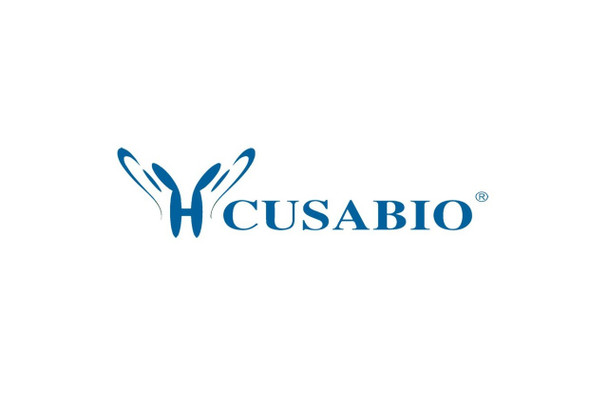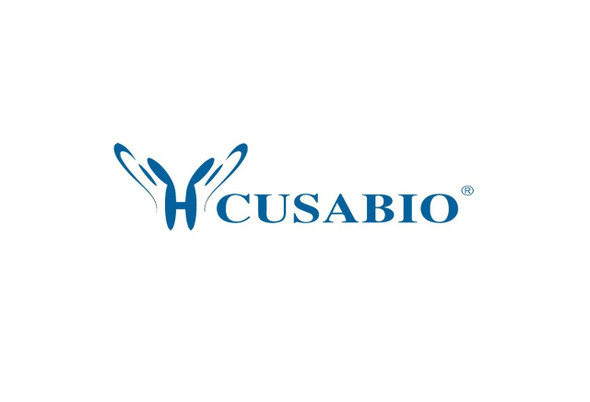Cusabio Human Recombinants
Recombinant Human Protein ETHE1, mitochondrial (ETHE1) | CSB-EP007847HU
- SKU:
- CSB-EP007847HU
- Availability:
- 13 - 23 Working Days
Description
Recombinant Human Protein ETHE1, mitochondrial (ETHE1) | CSB-EP007847HU | Cusabio
Alternative Name(s): Ethylmalonic encephalopathy protein 1Hepatoma subtracted clone one protein;Sulfur dioxygenase ETHE1
Gene Names: ETHE1
Research Areas: Cell Biology
Organism: Homo sapiens (Human)
AA Sequence: VARRQLSQRGGSGAPILLRQMFEPVSCTFTYLLGDRESREAVLIDPVLETAPRDAQLIKELGLRLLYAVNTHCHADHITGSGLLRSLLPGCQSVISRLSGAQADLHIEDGDSIRFGRFALETRASPGHTPGCVTFVLNDHSMAFTGDALLIRGCGRTDFQQGCAKTLYHSVHEKIFTLPGDCLIYPAHDYHGFTVSTVEEERTLNPRLTLSCEEFVKIMGNLNLPKPQQIDFAVPANMRCGVQTPTA
Source: E.coli
Tag Info: N-terminal 6xHis-SUMO-tagged
Expression Region: 8-254aa
Sequence Info: Full Length of Mature Protein
MW: 43.1 kDa
Purity: Greater than 90% as determined by SDS-PAGE.
Relevance: Sulfur dioxygenase that plays an essential role in hydrogen sulfide catabolism in the mitochondrial matrix. Hydrogen sulfide (H2S) is first oxidized by SQRDL, giving rise to cysteine persulfide residues. ETHE1 consumes molecular oxygen to catalyze the oxidation of the persulfide, once it has been transferred to a thiophilic acceptor, such as glutathione (R-SSH). Plays an important role in metabolic homeostasis in mitochondria by metabolizing hydrogen sulfide and preventing the accumulation of supraphysiological H2S levels that have toxic effects, due to the inhibition of cytochrome c oxidase. First described as a protein that can shuttle between the nucleus and the cytoplasm and suppress p53-induced apoptosis by sequestering the transcription factor RELA/NFKB3 in the cytoplasm and preventing its accumulation in the nucleus .
Reference: Identification of new mutations in the ETHE1 gene in a cohort of 14 patients presenting with ethylmalonic encephalopathy.Mineri R., Rimoldi M., Burlina A.B., Koskull S., Perletti C., Heese B., von Dobeln U., Mereghetti P., Di Meo I., Invernizzi F., Zeviani M., Uziel G., Tiranti V.J. Med. Genet. 45:473-478(2008)
Storage: The shelf life is related to many factors, storage state, buffer ingredients, storage temperature and the stability of the protein itself. Generally, the shelf life of liquid form is 6 months at -20?/-80?. The shelf life of lyophilized form is 12 months at -20?/-80?.
Notes: Repeated freezing and thawing is not recommended. Store working aliquots at 4? for up to one week.
Function: Sulfur dioxygenase that plays an essential role in hydrogen sulfide catabolism in the mitochondrial matrix. Hydrogen sulfide (H(2)S) is first oxidized by SQRDL, giving rise to cysteine persulfide residues. ETHE1 consumes molecular oxygen to catalyze the oxidation of the persulfide, once it has been transferred to a thiophilic acceptor, such as glutathione (R-SSH). Plays an important role in metabolic homeostasis in mitochondria by metabolizing hydrogen sulfide and preventing the accumulation of supraphysiological H(2)S levels that have toxic effects, due to the inhibition of cytochrome c oxidase. First described as a protein that can shuttle between the nucleus and the cytoplasm and suppress p53-induced apoptosis by sequestering the transcription factor RELA/NFKB3 in the cytoplasm and preventing its accumulation in the nucleus
Involvement in disease: Ethylmalonic encephalopathy (EE)
Subcellular Location: Cytoplasm, Nucleus, Mitochondrion matrix
Protein Families: Metallo-beta-lactamase superfamily, Glyoxalase II family
Tissue Specificity: Ubiquitously expressed.
Paythway:
Form: Liquid or Lyophilized powder
Buffer: If the delivery form is liquid, the default storage buffer is Tris/PBS-based buffer, 5%-50% glycerol. If the delivery form is lyophilized powder, the buffer before lyophilization is Tris/PBS-based buffer, 6% Trehalose, pH 8.0.
Reconstitution: We recommend that this vial be briefly centrifuged prior to opening to bring the contents to the bottom. Please reconstitute protein in deionized sterile water to a concentration of 0.1-1.0 mg/mL.We recommend to add 5-50% of glycerol (final concentration) and aliquot for long-term storage at -20?/-80?. Our default final concentration of glycerol is 50%. Customers could use it as reference.
Uniprot ID: O95571
HGNC Database Link: HGNC
UniGene Database Link: UniGene
KEGG Database Link: KEGG
STRING Database Link: STRING
OMIM Database Link: OMIM









